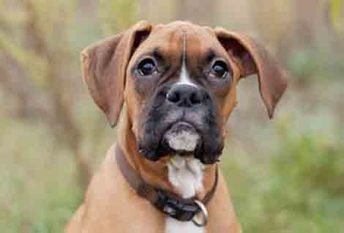The Chinook has a thick, easy-to-groom double coat that sheds lightly every day. To remove dead hair and distribute skin oils, brush the coat once or twice a week. Baths are rarely necessary. Twice a year, the Chinook goes through a heavy shed, known as blowing coat. The process lasts for about three weeks, and you’ll want to brush your Chinook more often during that time to keep the loose hair under control.
Check the ears on a weekly basis for signs of infection, irritation, or wax build up. Cleanse regularly with a veterinarian-approved cleanser and cotton ball. Brush the teeth at least once per week to prevent tartar buildup and fight gum disease. Additionally, nails should be trimmed once per month if the dog does not wear down the toenails naturally.
At a minimum, 1 session per day (more for younger dogs) of at least 20 – 30 minutes each, although they are up for more or longer sessions. Do include occasionally have a long walk orhike. Walks – daily, moderate (25 – 40 minutes) walk at a steady pace is fine.
With this said, Chinook puppies should not be given too much exercise because their joints and bones are still growing and too much pressure on them could result in causing a dog a few problems later on in their lives. They should not be allowed to jump up or off furniture nor should they be allowed to run up and down the stairs because this puts too much pressure on their still growing joints and limbs.
Hiking– moderate to long, low-key hikes are great
Flyball,Training,Dog-packing
Agility– these agile dogs are natural for this sport
Obedience – a smart breed that likes to work hard and likes to please
Skijoring– these strong dogs like to pull and are great in cold temperatures
Obedience training
Search and rescue
Dog Parks– these dogs were bred to work with teams, are calm, and get along well other dogs
High-quality, dry kibble is needed to keep a Chinook in tip-top condition. He is athletic so his food should be formulated for active dogs. This breed should not be fed a diet of wet food as it can cause dental problems such as gum disease, tooth decay, and malodorous breath.
If you get a Chinook puppy from a breeder, they would give you a feeding schedule and it's important to stick to the same routine, feeding the same puppy food to avoid any tummy upsets. You can change a puppy's diet, but this needs to be done very gradually always making sure they don't develop any digestive upsets and if they do, it's best to put them back on their original diet and to discuss things with the vet before attempting to change it again.
Older dogs are not known to be fussy or finicky eaters, but this does not mean you can feed them a lower quality diet. It's best to feed a mature dog twice a day, once in the morning and then again in the evening, making sure it's good quality food that meets all their nutritional requirements. It's also important that dogs be given the right amount of exercise so they burn off any excess calories or they might gain too much weight which can lead to all sorts of health issues. Obesity can shorten a dog's life by several years so it's important to keep an eye on their waistline from the word go.
Learn about which human foods are safe for dogs, and which are not. Check with your vet if you have any concerns about your dog’s weight or diet. Clean, fresh water should be available at all times. Like many large breeds, Saint Bernard can experience bloat, a life-threatening condition where the stomach distends and twists. The causes of bloat aren’t fully understood, but experts agree that multiple, small meals per day and preventing vigorous exercise around mealtimes may help reduce the chances of it happening.
All dogs have the potential to develop genetic health problems, just as all people have the potential to inherit a particular disease. Run, don’t walk, from any breeder who does not offer a health guarantee on puppies, who tells you that the breed is 100 percent healthy and has no known problems, or who tells you that her puppies are isolated from the main part of the household for health reasons. A reputable breeder will be honest and open about health problems in the breed and the incidence with which they occur in her lines.
Chinooks are a fairly healthy breed, with an average life expectancy of 12 to 14 years. Breed health predispositions may include cryptorchidism, epilepsy, hip dysplasia, vitreous degeneration, and paroxysmal dyskinesia.
Vitreous degeneration is a potentially serious eye condition which can predispose the eye to retinal detachment and blindness. Paroxysmal dyskinesia involves episodes of abnormal involuntary muscle movements that differ from epileptic seizures in terms of what they look like and the fact that affected dogs don’t lose consciousness.
Earlysocializationandpuppy training classesare recommended for all dogs and help to ensure that the Chinook grows into a well-adjusted, well-mannered companion. Chinooks are easy to train using positive reinforcement techniques. Unlike most sledding breeds, they can be reliable off-leash.
Chinooks, especially young ones, are enthusiastic and affectionate, and they tend to jump up and go face to face with human friends and family members unless they are trained early on not to do so. Because of his friendly, confident, outgoing personality, no amount of training will make a guard dog out of a Chinook.
Puppies should be properly socialized to develop the amiable, outgoing personality that is characteristic of the breed. They’re successful in performance and companion events such as earthdog, barn hunt, obedience, and agility.












